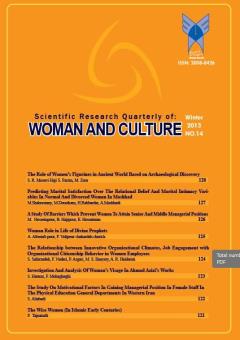The Wise Women (In Islamic Early Centuries)
Subject Areas : Philosophy and mysticism
1 - Master of Art student of Islamic theosophy, Islamic Azad university ,Dehaghan Branch
Keywords: Rabe’e Sha’avaneh. Fatima Neishabouri, The wise women,
Abstract :
The implications of women presence on Islamic Gnosticism history on Islamic Era four early centuries could be observed in religious records and documents regularly and in scattered in historical and theosophical texts. The current research introduced pious women from Basra in the first two Islamic centuries and their knowledge which was specialized on Koran and Hadith; a record of the words and deeds of the Islam Prophet. In third and fourth centuries, one can find out that the sole reason for Khorasanian wise women presence was without any doubt the strongly structure of Neishabour in social, political and scientific circumstances. The majority of these women regarded asceticism as basis of belief and did believe that they would find their calm in worship when they purify their soul through asceticism. Shaavaneh, Rabeeh, Fateme Neishaboori , and Aesheh could be regarded the most important mystic women of the mentioned time. Khorasan became Iranian mystic’s home development in the period in which Rabee initiated mystics and Khorasanian women interested in this field more than all the Neishaboorian women.
_||_

